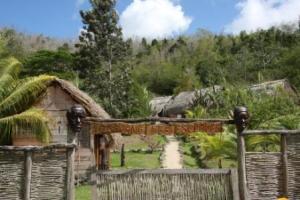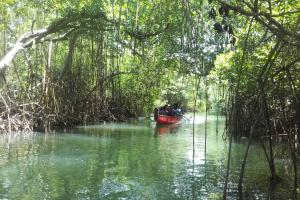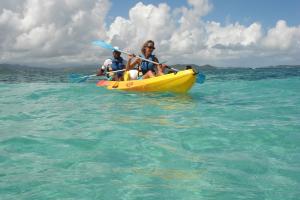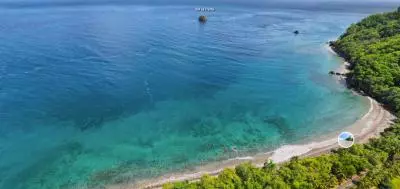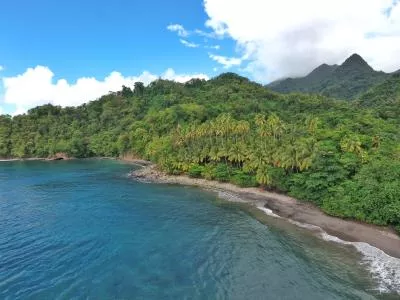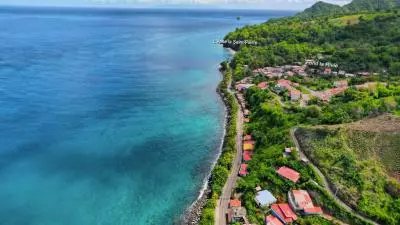At the tip of the North Caribbean Coast, its exuberant landscapes and black sand beaches are worth the detour. The name "Le Prêcheur" is said to come from a rock, now submerged, whose curious shape evoked a preacher in a pulpit.
With Saint-Pierre, Le Prêcheur was the first area of Martinique to be occupied by settlers in 1635. This small village is brimming with history, told through its natural sites and monuments.
A column erected in 1875 pays tribute to Governor du Parquet, first pillar of the colony from 1635 to 1658.
The church, destroyed many times, notably by the eruption of the Mount Pelée in 1902, has retained its seventeenth-century square bell tower, built out of the way.
See also the three bells donated by King Louis XIV's wife, Madame de Maintenon. She lived in Le Prêcheur around 1642, with her mother and brothers.
The Lighthouse, majestic at 11.85 m and 76 years old.
If legend is to be believed, the "Tomb of the Caribbean" was the scene of the mass suicide of the Caribbean Indians....
Le Prêcheur is renowned for its many black sand coves, accessible from sea or land, on which ruins of forts or sugar dwellings remain: l'Anse des Galets, l'Anse la Celle, l'Anse Couleuvre etc.
Le Prêcheur is also the starting point for beautiful hikes: Chemin des Anses, mountain Pelee via Grande Savane, the Trois Bras river. The Prêcheur/Grand-Rivière trail takes you to the other commune in the far north of the Atlantic.



